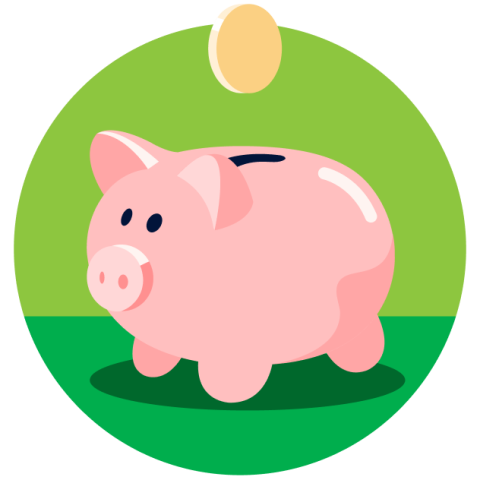Many or all of the products featured here are from our partners who compensate us. This influences which products we write about and where and how the product appears on a page. However, this does not influence our evaluations. Our opinions are our own. Here is a list of our partners and here's how we make money.
A savings account is an important way to prepare for big expenses and future goals — even if you start small.
No matter the amount you’re saving, what’s most critical is that you start now. “There’s never a time that’s soon enough,” says Angela Moore, a certified financial planner and the founder of Modern Money Advisor. The sooner you start saving, the sooner you can earn interest, money paid over time to your account by the financial institution just for depositing your funds.
Here’s a look at the potential annual earnings of three different savings balances and what you could do with the interest you accrue.

How much interest can you earn on $100?
The national average interest rate for savings is 0.45% annual percentage yield (the amount of interest an account earns in a year), but many national banks pay only 0.01%. If you deposit $100 in one of those savings accounts, you’ll end up with one penny in interest after a year.
What your interest can buy: That’s not enough money to buy much of anything. But if you deposit $100 in a high-yield savings account, you could earn enough for 30 minutes of parking.
The best high-yield savings accounts pay around 0.50% right now. After a year, you’d earn $0.50 in interest on your $100, maybe enough to pay for some metered street parking.
A balance of $100 doesn’t earn you much interest either way, but the benefit of using the account with a higher APY is clear: It pays 50 times the interest rate you’d earn in a regular savings account.

Member FDIC
SoFi Checking and Savings

4.50%
$0

Member FDIC
Citizens Access Savings

4.50%
$0.01

Member FDIC
CIT Bank Platinum Savings

5.05%
$5,000

Deposits are FDIC Insured
BMO Alto Online Savings Account

5.10%
$0
How much interest can you earn on $1,000?
If you’re able to put away a bigger chunk of money, you’ll earn more interest. Save $1,000 for a year at 0.01% APY, and you’ll end up with $1,000.10. If you put the same $1,000 in a high-yield savings account, you could earn about $5 after a year.
What your interest can buy: Ten cents is enough to buy a stick of gum — but $5 can get you about 2.5 gallons of gas.
How much interest can you earn on $10,000?
In a savings account earning 0.01%, your balance after a year would be $10,001. Put that $10,000 in a high-yield savings account for the same amount of time, and you’ll earn about $50.
What your interest can buy: A dollar is enough to buy a soda — but $50 will buy a date night meal for two or some shares of stock in certain Fortune 500 companies.
When should you start saving?
“You should start saving immediately,” Moore says. Saving whatever you can as soon as you can is best.
“There’s a misconception — people think that there will be some kind of windfall,” Moore says. Instead of waiting for a raise at work or an inheritance, it’s more important (and realistic) to begin building a savings habit as soon as possible.
You can start with whatever you can afford; many savings accounts don’t have a minimum opening deposit requirement.
The sooner you earn interest, the sooner you’ll be able to build on it, thanks to compounding. Compound interest works this way: When interest is calculated and added to your account, the larger balance then earns more interest.
Here’s an example: Say you save $1,000 for a year in an account that pays 0.50% APY, compounded annually. After 12 months, you’ll have $1,005.01. Then you’ll start earning interest on $1,005.01, so after the second year you’ll have $1,010.05.
You can calculate what interest you can earn on any balance with a compound interest calculator.
» Ready to start earning interest? Learn more about the best places to save money and earn interest
Choose a savings account that will pay you more
Just as important as saving sooner rather than later is choosing the right savings account. Though interest rates are low across the board right now, some accounts offer a higher APY than others, and every little bit adds up to more money for you.
Having your money in a high-yield savings account can help keep your money accessible while also earning you a higher interest rate than you’d get with a regular savings account. Find out where to put your money now by checking out our favorite high-yield online savings accounts.
On a similar note...










